The wearable market is definitely branching out. We now have a whole slew of different devices like the augmented reality based Google Glass, various smartwatches like the Moto 360 or LG G Watch R, virtual reality headsets like the Oculus Rift, and many others. Hell, we even have stylish wearables that can tell you if you’re getting too much sun.
There are so many different types of wearables, in fact that it can be a bit difficult to keep up with all the things happening in the industry. That’s why we’ve decided to explore some of the different areas with you. In particular, we’re going to talk about augmented reality and virtual reality headsets today like Sony’s Project Morpheus, or the Oculus Rift.
Augmented Reality vs. Virtual Reality
First things first, what’s the difference between augmented reality and virtual reality?
Augmented Reality Is…
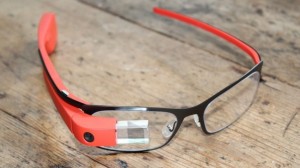 The best example of an augmented reality device is Google’s Glass headset. There are also dozens of apps available — such as Ingress — that use augmented reality to allow users to interact with the world around them. The biggest element that makes augmented reality different from virtual reality, is that it’s more grounded in the real world. In other words, digital content or information is projected into the real world, and thanks to augmented reality devices we can interact with or view that content.
The best example of an augmented reality device is Google’s Glass headset. There are also dozens of apps available — such as Ingress — that use augmented reality to allow users to interact with the world around them. The biggest element that makes augmented reality different from virtual reality, is that it’s more grounded in the real world. In other words, digital content or information is projected into the real world, and thanks to augmented reality devices we can interact with or view that content.
For example, a smartphone app may allow you to position a digital projection in the real world, ultimately creating a scenario where you can take a picture next to that fictional character. In the case of Ingress — the popular Android game — it projects the game world content into the real world, allowing players to use a combination of a smartphone’s GPS and camera functions to play the game.
Google Glass actually projects an image onto a small display in front of the wearer’s retina allowing them to interact with the world around them through a digital scape.
Virtual Reality Is…
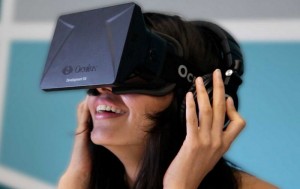 On the other hand, virtual reality is very much taking place in an alternate universe of sorts. When one considers the universal idea of virtual reality, the first thing that comes to mind is jumping into the world of a video game by wearing a virtual reality headset. Of course, this is just one of many different uses for the technology.
On the other hand, virtual reality is very much taking place in an alternate universe of sorts. When one considers the universal idea of virtual reality, the first thing that comes to mind is jumping into the world of a video game by wearing a virtual reality headset. Of course, this is just one of many different uses for the technology.
Virtual reality essentially envelopes the user and moves them into a completely different world or universe, a digital one if you will. This can be achieved through interactions such as sight, sound and movement. The Oculus Rift is a popular virtual reality headset that allows players to don the device and control games — and connected software — by simply moving their body. For instance, tilting your head or rotating it will result in the software that’s being displayed on-screen reacting in the same way.
Augmented vs. Virtual Reality: Which Is Better?
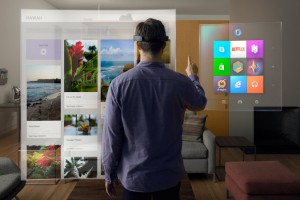 Neither type of device is better than the other, however they do each have their own set of pros and cons. Which type of device you use — or need — depends on your situation and environment.
Neither type of device is better than the other, however they do each have their own set of pros and cons. Which type of device you use — or need — depends on your situation and environment.
One could argue that if you have no intention of being in another reality of sorts, then augmented reality is the way to go. This is because augmented reality devices — like Google Glass — don’t actually take you out of the real world they just allow you to interact with it in fresh and innovative ways. Therein lies one of the biggest cons for augmented reality. You may find yourself so engrossed and encapsulated by the digital content that you simply ignore the world around you.
When Glass was first introduced, there were plenty of folks worried that wearers of the device might experience accidents in the real world. In other words, they would be too focused on what’s happening on-screen to pay attention to things in the world around them, like speeding vehicles or other pedestrians. While this belief is certainly a bit brash in terms of what could actually happen, it’s still a very real possibility when it comes to augmented reality.
Virtual reality on the other hand, is generally used in a closed and monitored space. You wouldn’t take a virtual reality headset and wear it while you’re walking around the streets of New York. It would most certainly get you killed, if you could get around at all. This is because when you don a virtual reality headset it’s like placing a completely encapsulating LCD screen around your entire head. All of the sounds and sights you see are usually digitally generated. They are wholly immersive, which is why virtual reality devices are becoming extremely popular in the world of gaming and entertainment. It shouldn’t really come as a surprise to anyone that this is happening.
What Devices Are Available Now?
Quite a few of the devices on the market currently are either in the early stages of development or they’re outright prototypes. That shouldn’t necessarily cause you to shy away from the technology, however.
If you’re not interested in purchasing an unfinished product, you may have to wait a year or two for all the kinks with these devices to be ironed out. The Oculus Rift, for instance is well on its way to the consumer market, but still has some development time left before that happens.
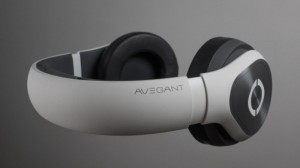 If you’re interested in virtual reality devices, here’s a quick list of some of the more popular models out there:
If you’re interested in virtual reality devices, here’s a quick list of some of the more popular models out there:
- Oculus Rift
- Sony’s Project Morpheus
- Samsung’s Gear VR
- Microsoft’s Xbox One VR
- Visus VR
- Sulon VR’s Cortex Headset
- Avegant Glyph
- Razer OSVR
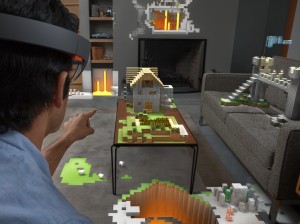 When it comes to augmented reality, some of the more popular models out there include:
When it comes to augmented reality, some of the more popular models out there include:
- Google Glass
- Microsoft’s Project Fortaleza
- Microsoft HoloLens
- Google’s Ingress Augmented Reality Game (mobile app)
- CastAR headset
Of course, please keep in mind that neither of these lists should be considered comprehensive. There are plenty of other devices out there on the market that fit one of these categories, or may even blur the boundaries between both. Not to mention, several more devices will be hitting the market over the coming year so you can bet that we’ll miss a couple.
What Are Some Ways That Augmented and Virtual Reality Devices Can Be Used?
 It’s easy to say that both types of devices work great for video games, entertainment and even navigation (Google Glass offers visual turn-by-turn GPS navigation). That said, it’s just as easy to forget that this technology can be far-reaching. There are so many possibilities for this tech, that the list is truly endless. That said, we’re going to do our best and list a few scenarios where these types of devices could work wonders.
It’s easy to say that both types of devices work great for video games, entertainment and even navigation (Google Glass offers visual turn-by-turn GPS navigation). That said, it’s just as easy to forget that this technology can be far-reaching. There are so many possibilities for this tech, that the list is truly endless. That said, we’re going to do our best and list a few scenarios where these types of devices could work wonders.
- Medical and surgeon training through virtual reality
- Exploring a new location or country thanks to augmented reality information
- Military and law enforcement training through virtual reality excercises which simulate real combat scenarios
- Education and corriculum cases where students can experience lessons and studies firsthand
- Driverless vehicles with augmented reality content displayed on the windshield
What are some unique ways that you could see augmented reality and virtual reality tech being used? Are you excited for these devices and future advancements in the industry, or are you skeptical?
What sorts of concerns do you have now that this technology is finally making it’s way to consumers?
